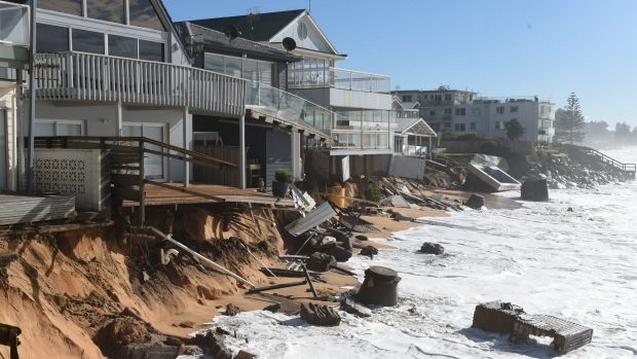NSW recorded its worst figures in at least five years for diseases caused by food poisoning and mosquito bites, as doctors warn climate change is looming as a public health emergency.
Statistics released last week show 2016 was the worst year on record for diseases including legionnaires' disease, salmonellosis, listeriosis, E. coli and dengue fever, which flourish in warmer conditions.
 |
| The Royal Australasian College of Physicians has warned that climate change will lead to more disease. Photo: Nicolas Walker |
The Royal Australasian College of Physicians [RACP] has released a position paper that described climate change as a "global public health emergency".
Although Australia was not the most vulnerable nation, its population was already experiencing higher rates of respiratory illness, diarrhoea and morbidity requiring hospital admission during hot days, and higher rates of suicide in rural areas during drought years, it said.
The RACP called for a national climate and health strategy and reduced emissions of greenhouse gases.
The World Health Organisation estimates that global warming will cause an extra 250,000 deaths annually between 2030 and 2050.
Labor's health spokesman Walt Secord said the government should conduct surveillance and monitoring of air cooling systems, consider spraying after flooding and institute a public health campaign alerting families to symptoms.
Legionnaires' disease is spread by contaminated cooling towers for air conditioning units, and health authorities have indicated their extended use in warmer weather might have contributed to the number of outbreaks last year.
Mr Secord said there had been more outbreaks of gastroenteritis in child care centres and nursing homes, including 50 separate outbreaks in June and July, with the protracted warm weather.
 |
| Salmonella was rampant in NSW in 2016. Photo: Rocky Mountain Laboratories,NIAID,NIH |
"Unfortunately, we are seeing diseases associated with the tropics being reported further south, such as the State's North Coast – and mosquitoes carrying tropical diseases being found in the State's Central West and in coastal areas.
"It is mind-boggling that the Liberals and Nationals are still denying the impact of climate change on our health."
All the dengue fever cases would have been imported from interstate or overseas as NSW does not have any of the vector mosquitoes.
NSW Director of Health Protection Jeremy McAnulty said there was not enough long term data to draw a definitive link between certain diseases and climate change, and even when a trend was detected it was difficult to isolate warm weather as the cause.
Gastro diseases such as salmonella were more prevalent in summer when the warmer weather made better conditions for bacteria to thrive in food.
"It might be logical that [salmonella] will increase in general over longer periods, but we don't really know," Dr McAnulty said.
"Similarly with mosquito-borne disease it's really unclear what the long term impact will be.
"We're always worried about these things. We talk about what impact climate change might have internationally with various diseases but we're not able to say what that might mean for the coming year."
The RACP's David Harley said it was likely that the risk of certain diseases would increase with global warming.
"Iti's illogical to suggest that the risk won't change and it's illogical to suggest that for some diseases the risk won't increase, but it's a complicated equation," he said.
His own modelling showed dengue fever was likely to become less of a threat in North Queensland as the temperature warmed, but it was possible the optimum conditions for the mosquito would just move south, he said.
2016 was also the worst year for cryptosporidiosis, gonorrhoea, meningococcal, pneumococcal, tuberculosis, influenza A and shigellosis, which have no obvious link to climate change.
It was the best year for chicken pox, which falls under the immunisation program, and Barmah Forest virus, which typically has few cases immediately following a spike because infection gives immunity.
The Climate Council reported last year that there had been a steady increase in the number of deaths in summer over the last four decades, indicating that climate change might already be affecting mortality rates.
Links
- More salmonella cases linked to tainted Red Dirt rockmelons
- Salmonella salad cases across Australia continue to rise
- Climate Impacts on Human Health
- Climate change to widen range of disease-carrying mosquitoes
- Climate change could worsen diseases like Zika virus, experts say
- Climate and Health Program
- Climate Change and Public Health Climate change is thawing deadly diseases




